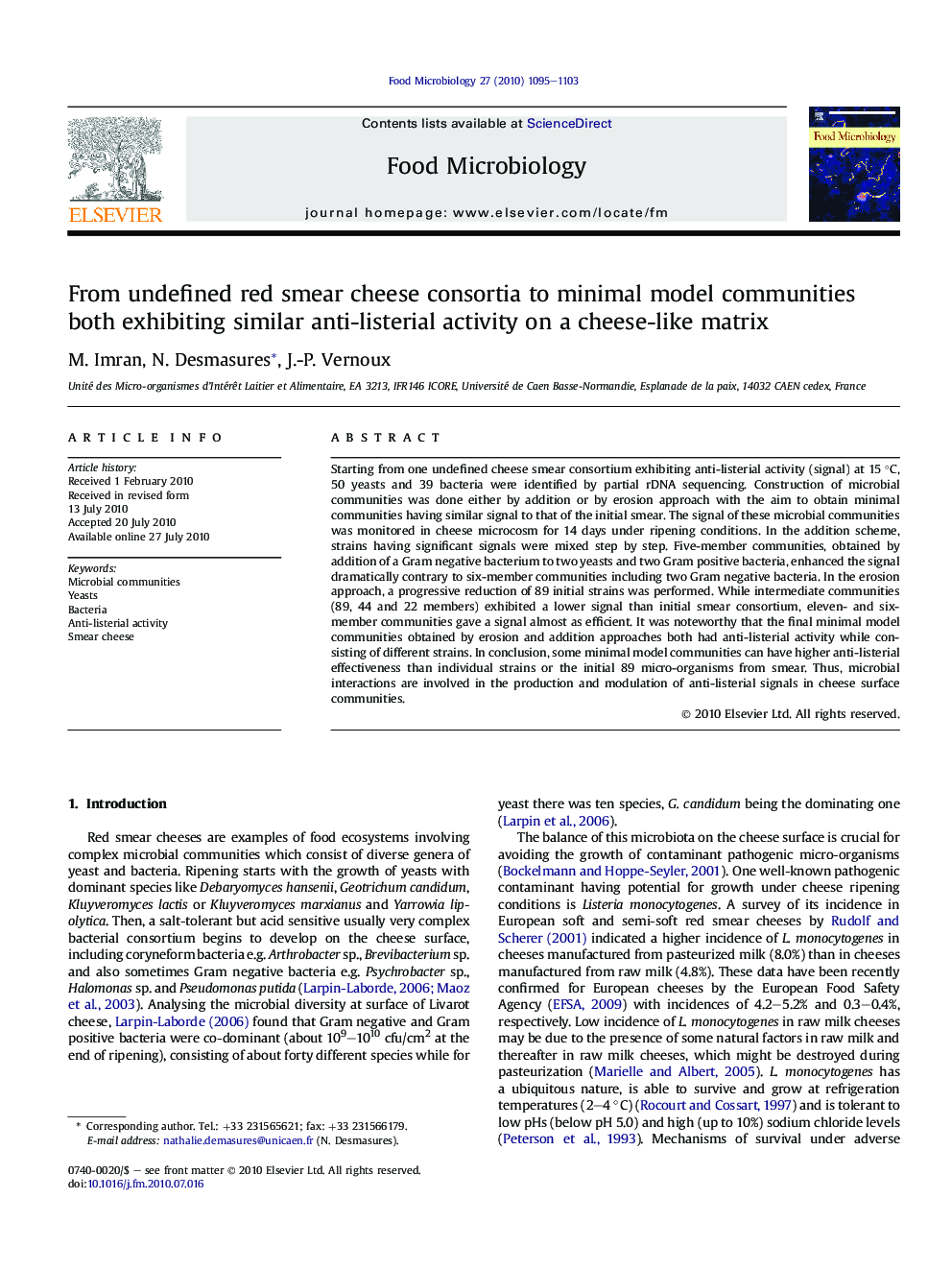| Article ID | Journal | Published Year | Pages | File Type |
|---|---|---|---|---|
| 4363353 | Food Microbiology | 2010 | 9 Pages |
Abstract
Starting from one undefined cheese smear consortium exhibiting anti-listerial activity (signal) at 15 °C, 50 yeasts and 39 bacteria were identified by partial rDNA sequencing. Construction of microbial communities was done either by addition or by erosion approach with the aim to obtain minimal communities having similar signal to that of the initial smear. The signal of these microbial communities was monitored in cheese microcosm for 14 days under ripening conditions. In the addition scheme, strains having significant signals were mixed step by step. Five-member communities, obtained by addition of a Gram negative bacterium to two yeasts and two Gram positive bacteria, enhanced the signal dramatically contrary to six-member communities including two Gram negative bacteria. In the erosion approach, a progressive reduction of 89 initial strains was performed. While intermediate communities (89, 44 and 22 members) exhibited a lower signal than initial smear consortium, eleven- and six-member communities gave a signal almost as efficient. It was noteworthy that the final minimal model communities obtained by erosion and addition approaches both had anti-listerial activity while consisting of different strains. In conclusion, some minimal model communities can have higher anti-listerial effectiveness than individual strains or the initial 89 micro-organisms from smear. Thus, microbial interactions are involved in the production and modulation of anti-listerial signals in cheese surface communities.
Related Topics
Life Sciences
Agricultural and Biological Sciences
Food Science
Authors
M. Imran, N. Desmasures, J.-P. Vernoux,
